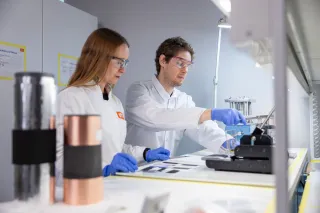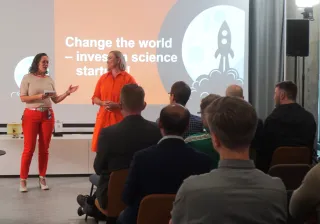In the 1980s, it was already being said that nuclear power had no future. Since then, the mood has not been lightened by the Fukushima accident, or Olkiluoto's difficulties in Finland.
However, the pressure to reduce carbon dioxide emissions has led many people to ask an awkward question: since reducing greenhouse gases is so vital, why not invest more in the development of nuclear energy?
This is a good question, so good that new nuclear power plants are being built and old ones upgraded in the east and west. China is building twenty new plants, and South Korea four. The United States has invested $82 million and the UK £250 million in research into next-generation reactors.
Some other – slightly more surprising – parties also believe in nuclear power. They ask another good question: why would the current light water reactors be the only solution, and when will next-generation nuclear power plants be possible?
As if this were not amazing enough, nuclear power is a hot topic among startups. In his technology blog, Peter Diamandis listed 55 nuclear power-related startups, which have accumulated an astonishing $1.6 billion in funding.
A nuclear startup known as Terra Power is developing a cheaper and more environmentally friendly form of nuclear power. The Chairman of its Board is Bill Gates. Jeff Bezos of Amazon has invested in a Canadian company called General Fusion, which aims to advance fusion energy.
Major investor David E. Shaw, the Chinese billionaire Li Kashing, Microsoft's Paul Allen and the founder of PayPal Peter Thiel are also turning to the power of the atom. None of these people can be described as oddballs, even if their urge to save the world varies.
Thiel has invested in a startup called Transatomic Power, led by two young researchers from MIT. Its solution is molten salt, a 1960s idea based on which a reactor burns liquid uranium, acting as a generator that 'eats' nuclear waste.
Transatomic promises better failure tolerance, in other words safety, and 75-fold greater efficiency than current reactors. The scientific community has greeted the latter claim with scepticism; the company has been criticised for reaching conclusions that break the laws of physics and making impossible promises. We will soon see: Transatomic has announced its intention to build a 20 megawatt demo reactor within five years.
One more question arises. If and when nuclear power makes a comeback, what will the reactors 'feed on' and where will such food be found?
The 'grain basket' of the nuclear industry, i.e. the most abundant source of high-quality uranium, is the Athabasca Basin. Fortunately, this natural resource lies in Canada, a politically stable and transparent part of the world. This is not a minor detail, considering the political upheavals in the Middle East, Central Asia and Africa.
The day will come when we look back in amazement on the fact that abandoning nuclear power was once so popular.




